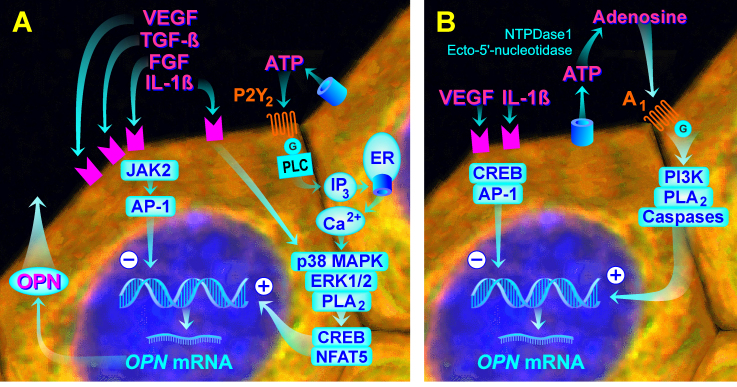Figure 8.
Schematic summary of signal transduction pathways that are implicated in regulation of expression of the OPN gene in cultured RPE cells under hyperosmotic and hypoxic conditions. A: High NaCl-induced extracellular hyperosmolarity induces release of VEGF, TGF-β1, FGF, IL-1β, and ATP from the cells. The first three factors inhibit, and IL-1β and ATP stimulate, OPN gene expression. The effect of ATP is mediated in part by autocrine or paracrine activation of the P2Y2 receptors. Hyperosmotic OPN gene expression is mediated by the activities of p38 MAPK, ERK1/2, and PLA2, and the transcriptional activities of CREB and NFAT5. Inhibitory effects on hyperosmotic expression of the OPN gene are mediated (in part) by JAK2 and AP-1. High NaCl, but not extracellular hyperosmolarity, also stimulates the secretion of the OPN protein from RPE cells. B: Hypoxia induces release of VEGF, IL-1β, and ATP from the cells. VEGF and IL-1β inhibit OPN gene expression. ATP is extracellularly degraded to adenosine which activates A1 receptors resulting in stimulation of OPN gene expression. Hypoxic expression of the OPN gene is mediated (in part) by the activities of PI3K, PLA2, and caspases. Inhibitory effects on hypoxic expression of the OPN gene are (in part) mediated by CREB and AP-1.

